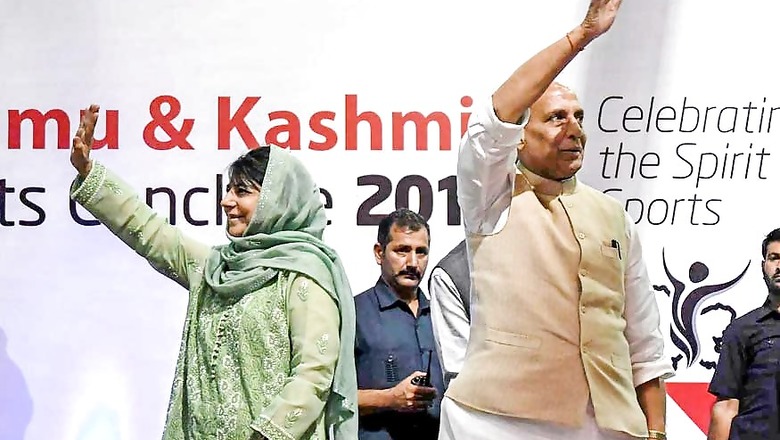
views
New Delhi: Coalition governments in Kashmir have always been unstable. Since 1947, of the five coalition governments that the state witnessed, only the National Conference-Congress alliance from 2009 to 2015 lasted a full term. The other four collapsed mid-way, triggering long spells of violence, instability and democratic vacuum.
With a history of central government interventions, unstable coalition government formations are not new to the sensitive state.
One of the very first coalition governments formed in Jammu and Kashmir was in 1982. After the death of his father Sheikh Abdullah, National Conference (NC) president Farooq Abdullah won the elections and got a clear majority. However, the Congress engineered few defections in NC and toppled the Farooq government. His brother-in-law Ghulam Ahmad Shah was propped up as the Chief Minister with the backing of Congress. However, his government was dismissed on March 12, 1986, by the then Governor Jagmohan following communal riots in south Kashmir.
In 1987, the National Conference headed by Farooq Abdullah formed a government with support from the Congress. The 1987 elections were widely reported to be have been rigged. The phase also saw the beginning of militancy in the state, which led to violence on large scale. The NC-Congress coalition lasted till 1990 before it was dismissed by the central government. The state was then placed under Governor’s rule, which lasted for six years until the next elections in 1996.
Jammu and Kashmir saw its third coalition government in 2002 when the newly formed Peoples Democratic Party (PDP) headed by Mufti Mohammad Sayeed and the Congress came together. Even though the NC emerged as the single largest party in the state, it was the PDP-Congress alliance that formed the government with a three-year rotational chief minister formula tried out for the first time. Sayeed was CM for the first three years from 2002 to 2005, while Ghulam Nabi Azad of the Congress took control for the remaining period.
The coalition, however, collapsed after the PDP pulled out in 2008 over the allotment of Kashmir land to the Amarnath Shrine Board.
In 2008, the fourth coalition government of Jammu and Kashmir began this time with the NC-led by Farooq Abdullah’s son Omar Abdullah in an alliance with the Congress. The Congress was the kingmaker after the party bagged 17 seats in the state. It was in a position to ally with either the PDP, which had 21 seats, or NC, which had 28 seats. The Congress, however, ditched its previous coalition partner and backed Omar Abdullah, who at 39 became the youngest CM of the state.
This government lasted its full term of six years before the state delivered a region-based split verdict in the Assembly elections held in 2015. Majority of voters from the Muslim-dominated Kashmir valley voted for the PDP which won 28 seats, while the Hindu-dominated Jammu region opted for the BJP with 25 seats. NC was limited 15 seats and the Congress bagged 12 seats.
This fractured mandated paved way for the fifth and the most controversial coalition government in the state of Jammu and Kashmir. The PDP and the BJP formed a coalition of two parties that were ideologically poles apart but brought together by a hung House.
A common minimum programme with a focus on development was drawn up as the basis of this unusual alliance. The two stitched up a power-sharing pact but cracks surfaced soon after.
This coalition lasted three years when the BJP opted out of the alliance citing the deteriorating law and order situation in the state leading to killings of acclaimed journalist Shujaat Bukhari.














Comments
0 comment